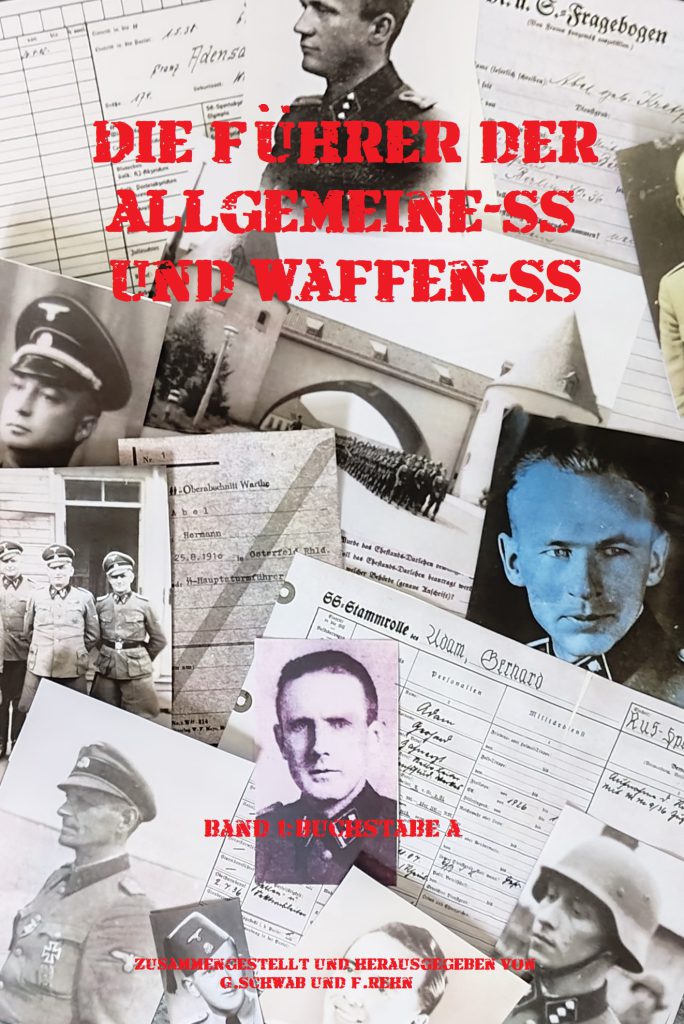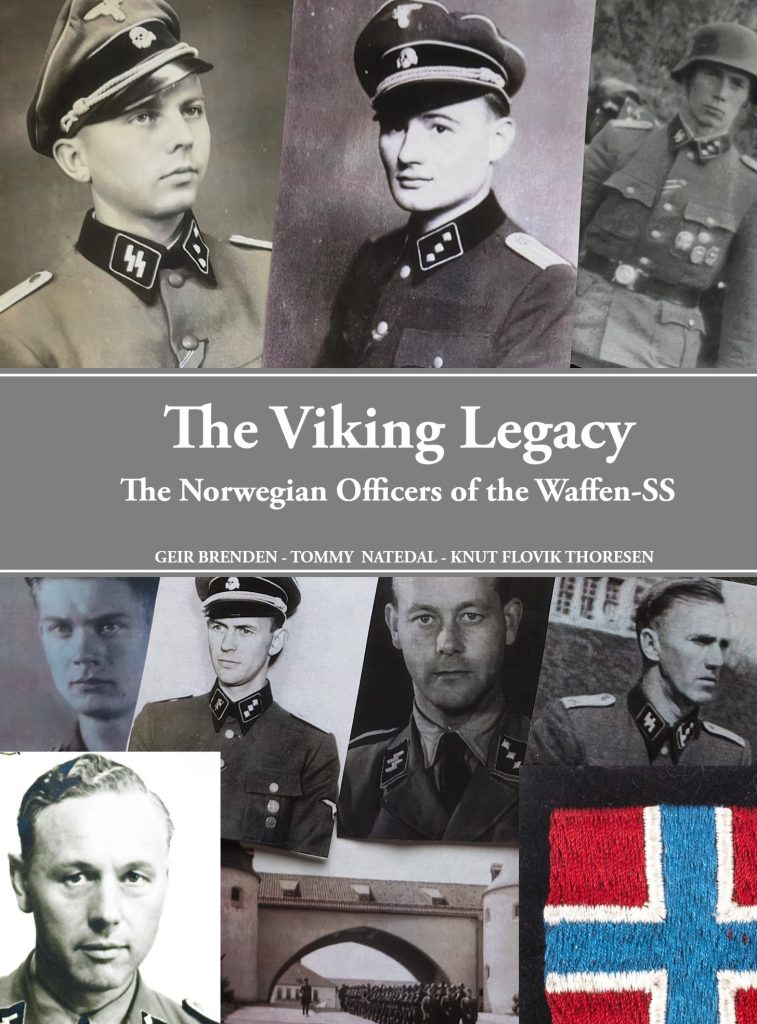Home » Okategoriserade
Category Archives: Okategoriserade
The Officers of the SS and Waffen-SS Vol. B:1
At long last, the second volume in our series has been published. It is now available on all platforms provided by Amazon. In this volume, you will find 2017 officers of the SS and Waffen-SS, and for roughly 1,400 of them we have managed to locate a photograph. Nothing comparable has been produced before, and I hope that this work will help you advance further in your research.
As always, the work has been compiled using files from NARA, the Bundesarchiv, personal collections, fellow researchers, and archives around the world.
As we have stated previously, we do not claim that this is a complete work—only that it is as close as it is possible to get.
Throughout the year, we have made eight separate research trips to Germany to visit various archives, and we will be travelling again this Thursday (11 December 2025) to gather even more material, this time for Volume B:2 (Bernhard Brauamndl). Volume B:2 currently contains just over 1,900 officers, and we estimate that Volume B:3 will have a similar number.
A major development is that from now on all text—apart from unit designations, ranks, and awards—will be in English. We have also translated Volume A into English, and it too is available on Amazon.
https://a.co/d/6AiuuS4 (Amazon.com)
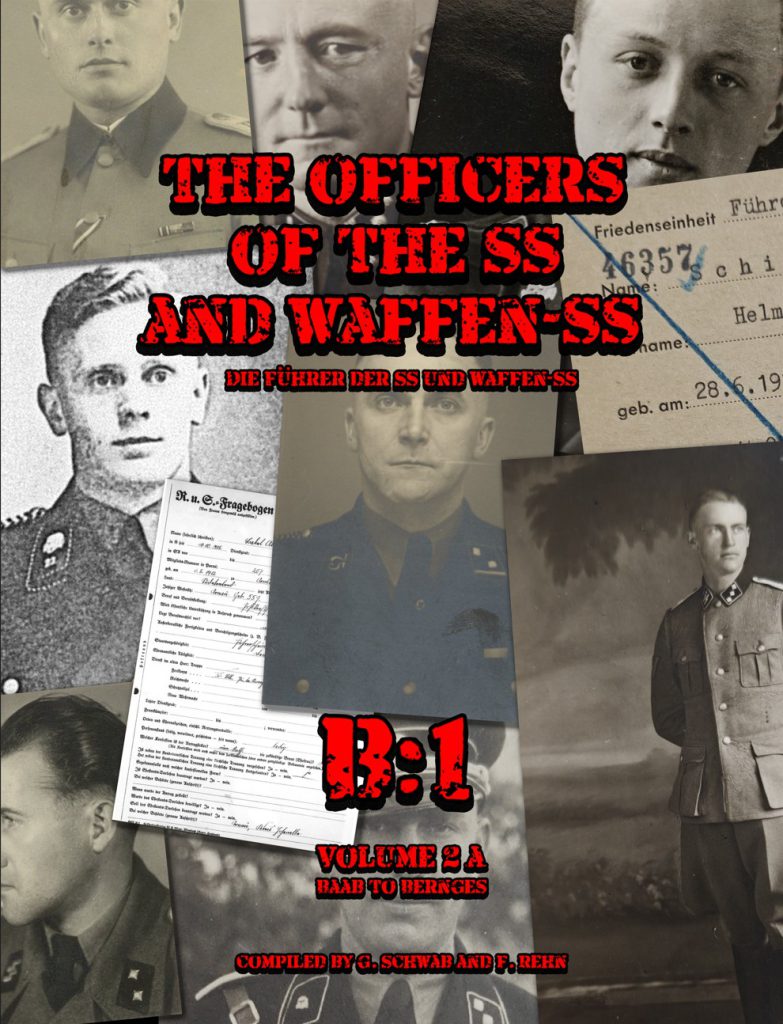
“Eiserne Kreuz” a new digital magazine
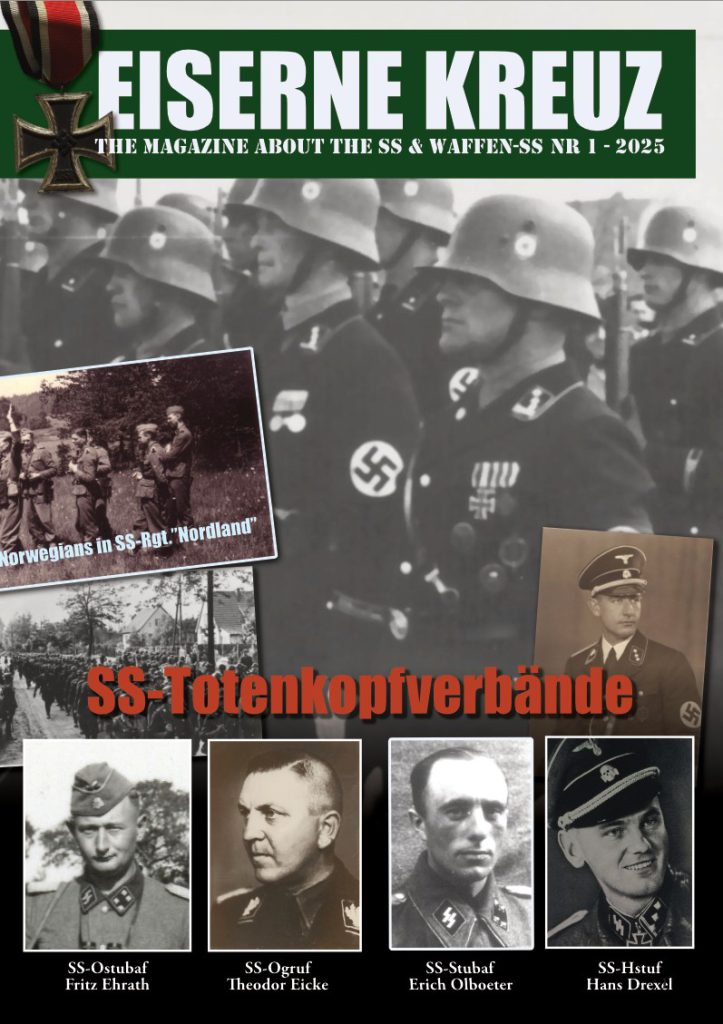
Since some time I have with the help from a friend started to creat a digital magazine which will deal with all kind of acpects about the SS and Waffen-SS. We also have great contributors of writers who have shared most interesting stories from their own archive. 62 pages in total.
The first issue will be free to download from the internet, but the upcoming issues will only be sent through emails to those who sign up to get it. Its free and won´t cost you a dime. To sign up you just send me an email on info(a)axishistory.com, please write “Eiserne Kreuz” in the subject line.
In the first issue we deal with the SS-Totenkopfverbände (1936-1940), several different RK holders of the Waffen-SS, many with totally new photos and never to be seen before. We also share som trivial info regarding the SS/Waffen-SS.
We have taken the artistic liberty of naming the magazine “Eiserne Kreuz”, if we were to follow all the language rules it would actually be called “Das Eiserne Kreuz”, but just like many other newspapers they have removed “the” or “Der, Die or Das”.
We should also point out that we (so far) behind the magazine do NOT have English as our native language, even though we have had the magazine proof read by an Englishman, there may still be some grammatical errors etc. I hope you understand this.
I hope you will enjoy this magazine, and as we don´t have scedual when they will be published I can´t say when Issue Nr 2 is out, we are currently working on it. We are also working on Nr 3.
Temporarly removed! Eiserne Kreuz Nr 1
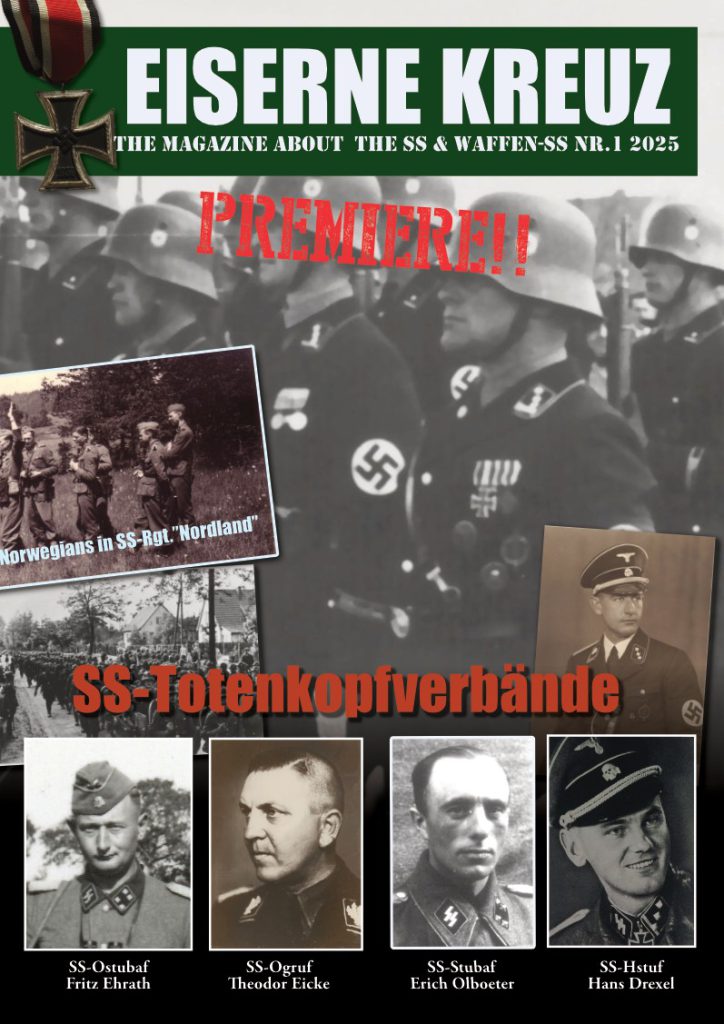
Unfortuantely we found some errors in the magazine so it´s temporarly removed, but it will be up and running in a short while.
The new Digital magazine about the SS and Waffen-SS , free to download here.
Any questions, suggestions etc. Send me an email, you find the adress within the magazine.
Enjoy!
//Georg
Was it a Warcrime or not?
A discussion I had with a person on Facebook forced me to write this article. The discussion we had was an alleged massacre that was allegedly carried out by the SS-Regemente “Deutschland” in April 1941. The reason I write alleged is for several reasons. I will now demonstrate here why this article is incorrect and that I believe that the alleged research the author is said to have carried out is very flawed.
He writes in the article that he will now identify the people who are supposed to have carried out the alleged massacre. However, my research shows that he has missed several essential pieces and people who would later be of interest. He also writes that he has researched this matter for five years, despite this, he has not retrieved the documents that are found in the former office for the Investigation of Crimes Committed by National Socialism in Ludwigsburg. After about 45 minutes after we received these three folders from the Bundesarchiv, we immediately saw that his story does not hold up. Which is perhaps why it only circulates on ONE page of all on the Internet and the person’s own Facebook page, from which I am are banned after I started questioning the alleged massacre.
But BEFORE I start going into details, I still want to EMPHASIZE that of course the Waffen-SS committed war crimes, and also crimes against humanity, but I still believe that it is IMPORTANT that we reproduce these crimes in an adequate and correct way, because if not, this is how future researchers will be just as quick as I was to get the contradictory information and be able to point to this falsification and say “look they are lying about this, what else are they lying about?”. Enough about this, let’s get into the details!
The author claims that over 200 people were massacred in Alibunar on April 12, 1941, the Yugoslav authorities found out that there were 96 victims in total, where the author got the 200 victims from is unknown to us, he claims that there is a “Commission for the Investigation of the Crimes of the Occupiers”, is this commission supposed to work through the prosecutor in Yugoslavia? He offered to show the list, but we already have the list from the Yugoslav prosecutor, which today is preserved in the Bundesarchiv, among other things. I know that much of his so-called research leans towards the information of a Serbian researcher, I take these with a pinch of salt as they clearly show the same ignorance that the author has shown.

A point that has been VERY important and that is WHY a number of people were executed in Alibunar in April 1944, because it was done, no doubt about it, SS-Rgt. Deutschland has even noted it in his war diary from this day (April 11). The reason is very simple, the majority of those who fought against the German troops in Alibunar in April 1941 were so-called “Freischärler” which is the German term for partisans, or people who in civilian clothes take up the fight against armed troops. According to the Haug Convention (from 1907, it was changed again in 1949 and 1961) people who take up arms against a warring party in civilian clothes have no protection, they are completely at the mercy of the enemy and they were fully entitled to execute them. As I emphasized to the author several times – Morally wrong but legally correct! The author could have quickly found this information if he had used Google. I also tested this thesis on a couple of people I know, one of whom is a former police officer and the other works as a prosecutor, a neighbor of my old mother. Both said in unison – The matter is clear, Partisans, nothing to think about.
Furthermore, we can read in his story that what triggered the battle itself was a young man who shot SS-Rgt. “Deutschland” adjutant SS-Hstuf Paul Rohde, this young man was a civilian and shot Rohde in the chest after he stepped into a tavern. Although the Serbian researcher claims that the German troops fell in rows in the battle against the Yugoslavs. The only victim noted for SS-Rgt- “Deutschland” is precisely SS-Hstuf Rohde. When we search the Volksbund, we also do not get any other victims. Which is Point number 2 where I noticed that their story is not up to par.
The author points out SS-Rgt. “Deutschland” as the unit that is supposed to have carried out all the “crimes”, we look in the War Diary of the SS-Div. “Reich” for this day and we find the following units that are supposed to have been at Alibunar on April 11, 1941 – Divsion gefechstand (Div. Staben) SS-Nachrichten Abteilung 2, IV./SS-Art.Rgt.2 parts of the SS-Aufklärungsabteilung (SS-A.A.2) and large parts of the SS-Infanteriedivision “Grossdeutschland”. The prosecutor in Ludwigsburg tried to obtain the war diary from “Grossdeutschland” for these days in 1941 without success, according to the Militärarchiv in the Bundesarchiv in Freiburg these no longer exist. So who carried out the executions? I emphasize again, they were legal!
We look at the next point, the people he points out are the following people: SS-Rgt. “Deutschland” Rgt.Chef Wilhelm Bittrich, the head of the 9th Company in SS-Rgt. “Deutschland” Hans Joachim Woith, the latter the author points out as a former brutal SA man who was raised by Theodor Eicke as part of the SS-Totenkopfverbände. What he misses or if he chose to turn a blind eye to the facts is that we can read in Hans Joahcim Woith’s SS-Officer file that until September 20, 1938, he served in the SS-Totenkopfverbände (Thuringia), then he was transferred to the regular army in which he would then serve as Company Commander of an M.G.Company at Infantry Regiment 94 for almost a whole year. After his time in the Wehrmacht, Woith returned to the SS-V.T. now as tactics and battalion commander of the platoon command school in the SS-Übungslager Dachau, where he was for 10 months before being transferred to the SS-Junkerschule Braunschweig and there working as a tactics instructor, after a short break as Company Commander at the 3.(Ersatz)Kompanie at the SS-Rgt. “Deutschland” he came again to the SS-Junkerschule Braunschweig to work again as a tactics instructor. Only on the last of June 1940 he leaves the SS-Junkerschule Braunschweig and comes to the SS-Rgt. “Germania”. SS-Brig.fhr Demelhuber writes the following in a statement about Woith: A decent character, a bit restless, Very good general knowledge, good military theoretical knowledge, not quite finished with the practical skills. This does not sound like a brutal SA-Man if one can read his SS Officer file.
Then the author points out Werner Damsch and Karl Gelschheimer, however he writes that it is not certain that they were present at the execution, but still he chooses to mention them, why is unknown to us.
He points out the of III./SS-Deutschland” Heino von Goldacker who was the Ordonnance officer for III./”Deutschland”, as if an adjutant had given some orders. He conveyed orders. We believe that the author has stared blindly at the Stellenbesetzung that has been preserved for SS-Rgt. “Deutschland” for this particular period.
What really happened and that is documented in various documents, and we will now set them out point by point:
- – SS-Rgt- Deutschland and others arrive at Alibunar 17:30 on April 11, 1941
- – Fighting breaks out, SS-Hstuf Rohde is shot.
- – After about an hour the battle is over
- – Wilhelm Bittrich orders a number to be executed immediately, in our view in the heat of the battle and because he is upset about the death of SS-Hstuf Paul Rohde.
- – A court-martial is held, where a number are sentenced to death for participating in the battle as “Freischärler”
At lunch (11:30) on April 12, SS-Rgt. “Deutschland” leaves Alibunar, although the author writes in his story that the executions continued all night.
Viare writes that the SS-Div. “Reich” division judge did not come to Alibunar until April 13, if he had bothered to take out the files from the Bundesarchiv he would have seen that there was an SS judge on site, SS-Hstuf Hofmann. Vilekt was the one who set up the court to sentence the victims to death.
Furthermore, when we read further in the documents from Ludwigsburg, they carry out a number of interrogations, Bittrich, von Goldacker and others are interrogated, but not Damsch. But we read in the documents from Ludwigsburg and the Yugoslav prosecutor that the one they want to set up is SS Judge Hofmann, countless documents are about how he set up this court and whether he had any legal right to do so, that the prosecutor from Yugoslavia and Ludwigsburg would question the SS-Rgt- “Deutschland” right to execute “Freischärler” we do not find a trace of (600 pages)
One person, and that one of the follers will be about, which the author does not even mention by name in his article about the alleged massacre in Alibunar on April 11, 141, is the then SS-Ustuf Otto Skorzeny, this person the prosecutor in Ludwigsburg shows great interest in, even the Yugoslav prosecutor wants him extradited, now you have to consider that after the war, Yugoslavia requested that the Western Allies hand over all SS soldiers who fought in Yugoslavia, their trials after the war were a fars and most of those convicted were only scapegoats that the Yugoslav regime could show to its citizens. Again, the author had taken out the folders from Ludwigsburg, he had seen this information himself. I know in one of the discussions we had, the author tried to make it seem like “it was Germans at Ludwigsburg who were only trying to protect Germans”, this shows his total ignorance of what this office was really doing, they prosecuted a lot of people, but only when they knew they had a case they could win. If there were too many question marks, they let it go, but to claim that they “protected their own” is completely wrong! Also, many of the documents in these folders are documents from the Yugoslav prosecutor.
We must also note that the actions of the Infantry Division “Grossdeutschland” during these days are also something that the prosecutors and investigators at Ludwigsburg really tried to get to when they found signals that they should have shot people during the invasion of Yugoslavia, a personal opinion is perhaps that the Serbian researcher that the author leans against, has difficulty seeing the difference between “Deutschland” and “Grossdeutschland” both units wore this armband, even if the latter wore it on the right arm.
We must also note that the Yugoslav prosecutor wants to prosecute a large number of Germans, Croats, etc. with reference to the NEW Haug Convention, i.e. the one that came into force in 1961, a good attempt, but as far as I know, one cannot be convicted retroactively for something that was done BEFORE a law was enacted.
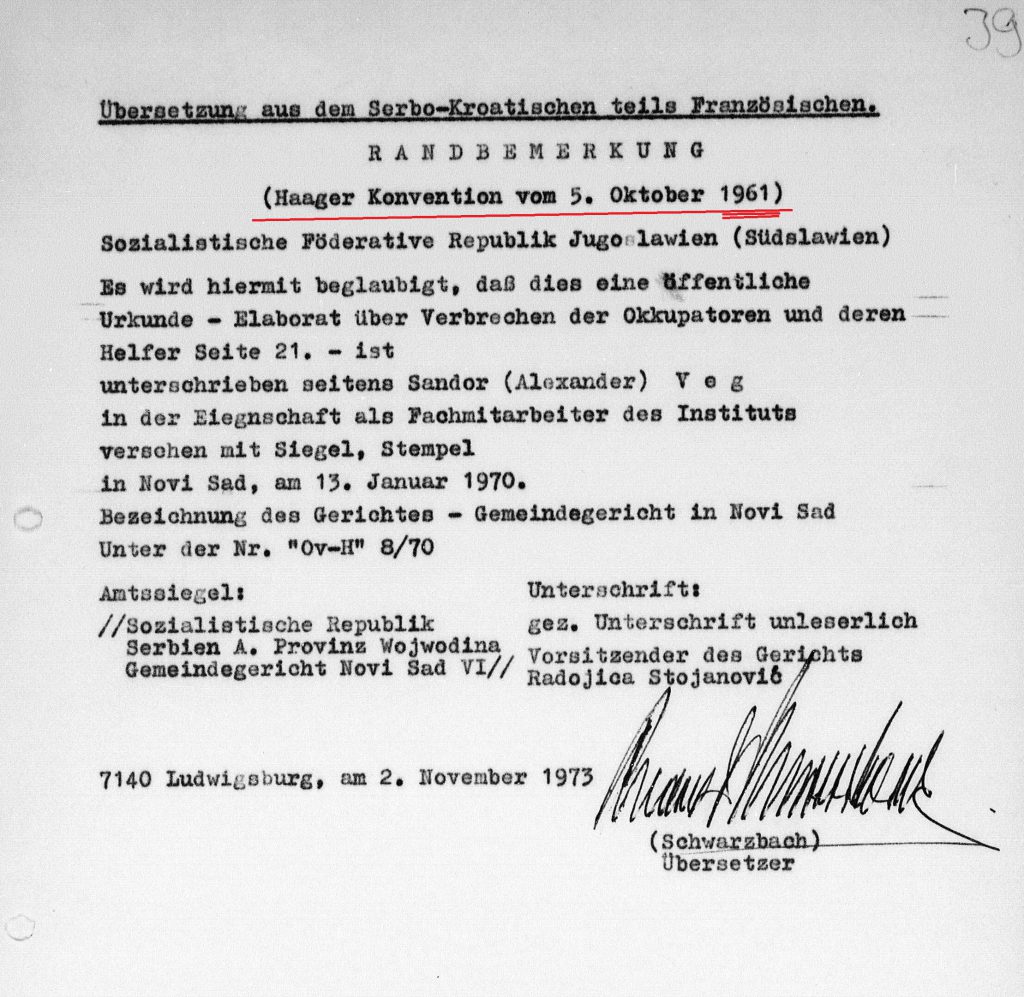
So the gist of what happened on April 11, 1941, morally wrong, but legally completely in order!
How to do your research part 3
Now we are in part three, in the first two parts we have covered important points when it comes to searching the Bundesarchiv. Now for a boring thing, the Bundesarchiv used to have a collaboration with Selke GmBH who copied files for you, for a cost of course. But you got what you ordered. For our part, this involved bringing home RuSHA files from Berlin Lichterfelde.
Since the turn of the year, the Bundesarchiv has ended the collaboration with Selke GmBH and they have introduced something called “Digitalisierung on Demand” (DoD), which means, if you are a registered user, that you can order files. Wow! Was my first thought, absolutely fantastic! BUT! Now we come to the bad part, you can only take home 10 acts in your registered area, and only ONCE, so if you, like us, are working on a big project, this was only a shot in the air, because what is 10 acts out of 1000 -numbers.
We have sent in an email to the Bundesarchiv with criticism, and that this was probably not the idea behind “DoD”, we are eagerly awaiting what they might write.
But to return to Invenio , our best stable tip is to start using “Navigierende Suche” and click your way forward, click in the box “Nur digitalisat anziegen” (show only digitalized) and you will get rolls that you can take home at once ( most often). It’s the only way to learn how the site works, because you can’t expect another researcher to do the work for you. Time is something that all researchers have too little of.
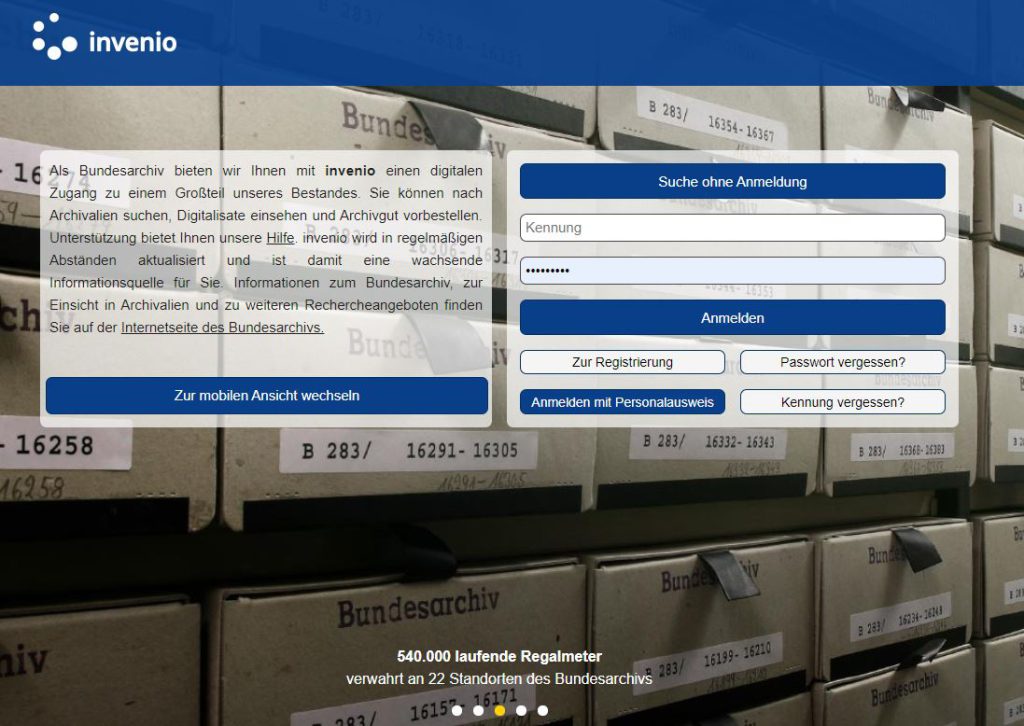
Learn where you can find different things, for those of us dealing with the Second World War, the “Norddeutscher Bund und Deutsches Reich (1867/1871-1945)” tab is the obvious choice, but then you also have a lot to find under “Nachlasse” but as I said, click through and learn the structure.
However, through a friend, over the weekend we came across a number of new groups on Invenio that we had missed, this meant that we have already brought home some Terrabyte of info, and have another 1000’s of pages to skim through. These rolls had a lot of info about RK, DkiG, Ehrenblatt, EK, KvK and other bits and pieces. Priceless in our opinion.
When you come to Invenio, you will see on the first page that you can “suche ohne anmeldung” which means that you can look around and download things that they have made available on the Internet. We use it when we search via mobile phone and are on the move.
Another hot tip, learn your username at the Bundesarchiv, you will need this when communicating with the Bundesarchiv. It’s a bit illogical username but it can be learned, because it’s ALWAYS BA. Since the year you registered, i.e. BA.2024.and then a six-digit number.
Now that you are sitting in the reading room of the Bundesarchiv and you have ordered a number of rolls, you can only order 40 files at a time, through the “merkzettel”, but if you, like me, have become a bit friends with the staff, you can submit an additional order when you are on site. The last time I was there I had a total of 60 rolls in two days. I found the staff at the Bundesarchiv to be very diligent. You then have a microfilm reader, where you either have 35 mm Microfilm or 16 mm. You load the machine and start searching, if you’ve been good and checked roughly where the information you’re looking for is on the roll, it’s quick. We who have the index of the RuSHA rolls knew exactly how many officers there were on each roll and where, hence we could manage as much as we did. Don’t waste tif and read on the spot, copy everything you can and then read at home in peace and quiet. Now if you don’t live near the Bundesarchiv and have all the time in the world. For us who live 1600 km from the Bundesarchiv, time is precious and do your homework!
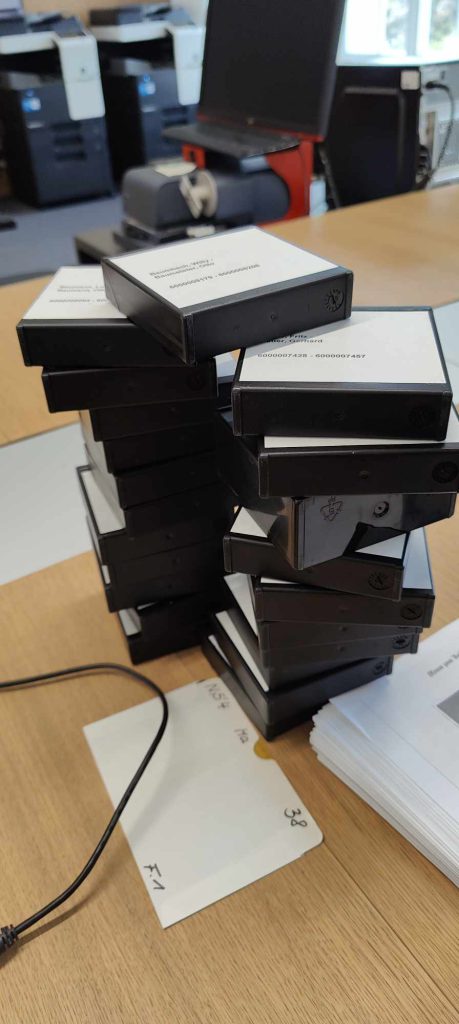
To look at the SS, you can download documents from all the “personnel files” without problems, bring some new usb sticks, the Bundesarchiv wants to check before you use them and then download. Acts with “sachakte” i.e. You are ABSOLUTELY not allowed to download SS-RuSHA digitally, the reason is simple, it is Germany’s privacy laws that come into force there. We have signed a document in which we commit, legally, not to disclose diseases, diagnoses, etc. that we get access to through the RuSHA files. On this point they are very strict, last winter when we were there shooting the screen, staff came to us and said “Herr Schwab, nur drücken” .. Yes, this has meant that we will soon have a running meter with RuSHA sterns here in our archive. Don’t be afraid of the cost, 367 pages cost us €12.80, which is nothing in the context.
In the next episode we check out the National Archives in the USA!

